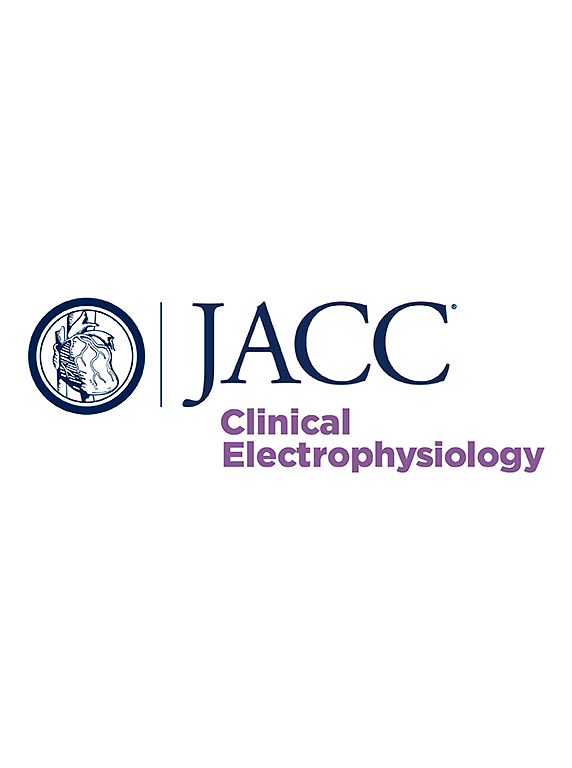Nanosecond vs Microsecond Pulsed Field Ablation
IF 8
1区 医学
Q1 CARDIAC & CARDIOVASCULAR SYSTEMS
引用次数: 0
Abstract
Background
A nanosecond pulsed field generator and a circular multielectrode catheter have been introduced.
Objectives
The aim of this study was to compare the durability, safety, and muscle contraction of ablation via microsecond or nanosecond pulsed field ablation (PFA) in canines.
Methods
Under general anesthesia without muscle relaxants, 24 canines were subjected to isolation of the superior vena cava (SVC) and pulmonary veins (PVs) using nanosecond or microsecond PFA. Repeat mapping was performed and the animals were sacrificed acutely (7 days, n = 9), subacutely (30 days, n = 9), or chronically (3 months, n = 6).
Results
All SVCs were isolated with durable isolation. A total of 161 sections from the SVC revealed transmural lesions in all sections, with a mean depth of 1.3 ± 0.7 mm. Similarly, all the PVs were isolated. Durable isolation was achieved in 23 (95.8%) of 24 PVs in nanosecond PFA and 22 (91.7%) of 24 PVs in microsecond PFA. Nanosecond PFA resulted in transmural lesions in 148 (97.4%) of 152 sections and a median lesion depth of 2.7 ± 1.2 mm. Microsecond PFA created transmural lesions in 155 (96.9%) of 160 sections with a median depth of 2.6 ± 1.0 mm. There were no significant differences in depth or transmurality between groups. Nanosecond PFA caused no, slight, and severe muscle contraction in 70.8%, 12.5%, and 16.7% PVs, respectively, and microsecond PFA resulted in no and severe muscle contraction in 29.2% and 70.8% PVs, respectively. Nanosecond PFA demonstrated a significantly lower incidence of severe muscle contraction (P < 0.001).
Conclusions
Nanosecond PFA yields comparable lesion durability, safety, and significantly reduced muscle contractions to microsecond PFA, which may help enable PV isolation without general anesthesia.
纳秒与微秒脉冲场消融:犬模型的损伤耐久性和肌肉收缩。
背景:介绍了一种纳秒脉冲场发生器和一种圆形多电极导管。目的:本研究的目的是比较通过微秒或纳秒脉冲场消融(PFA)对犬进行消融的耐久性、安全性和肌肉收缩。方法:在全身麻醉不使用肌肉松弛剂的情况下,对24只犬采用纳秒或微秒PFA分离上腔静脉(SVC)和肺静脉(pv)。重复定位,动物被急性(7天,n = 9)、亚急性(30天,n = 9)或慢性(3个月,n = 6)处死。结果:所有SVCs均被持久分离。SVC共161张切片,所有切片均可见跨壁病变,平均深度为1.3±0.7 mm。同样,所有pv都是分离的。24个pv中有23个(95.8%)在纳秒PFA中获得持久分离,22个(91.7%)在微秒PFA中获得持久分离。纳秒PFA导致152个断面中148个(97.4%)出现跨壁病变,中位病变深度为2.7±1.2 mm。微秒PFA在160个切片中产生155个(96.9%)的跨壁病变,中位深度为2.6±1.0 mm。两组间在深度和跨性方面无显著差异。纳秒PFA分别导致70.8%、12.5%和16.7%的pv没有、轻微和严重的肌肉收缩,微秒PFA分别导致29.2%和70.8%的pv没有和严重的肌肉收缩。纳秒PFA显著降低了严重肌肉收缩的发生率(P < 0.001)。结论:与微秒PFA相比,纳秒PFA具有相当的损伤持久性、安全性和显著减少的肌肉收缩,可能有助于在没有全身麻醉的情况下进行PV隔离。
本文章由计算机程序翻译,如有差异,请以英文原文为准。
求助全文
约1分钟内获得全文
求助全文
来源期刊

JACC. Clinical electrophysiology
CARDIAC & CARDIOVASCULAR SYSTEMS-
CiteScore
10.30
自引率
5.70%
发文量
250
期刊介绍:
JACC: Clinical Electrophysiology is one of a family of specialist journals launched by the renowned Journal of the American College of Cardiology (JACC). It encompasses all aspects of the epidemiology, pathogenesis, diagnosis and treatment of cardiac arrhythmias. Submissions of original research and state-of-the-art reviews from cardiology, cardiovascular surgery, neurology, outcomes research, and related fields are encouraged. Experimental and preclinical work that directly relates to diagnostic or therapeutic interventions are also encouraged. In general, case reports will not be considered for publication.
 求助内容:
求助内容: 应助结果提醒方式:
应助结果提醒方式:


